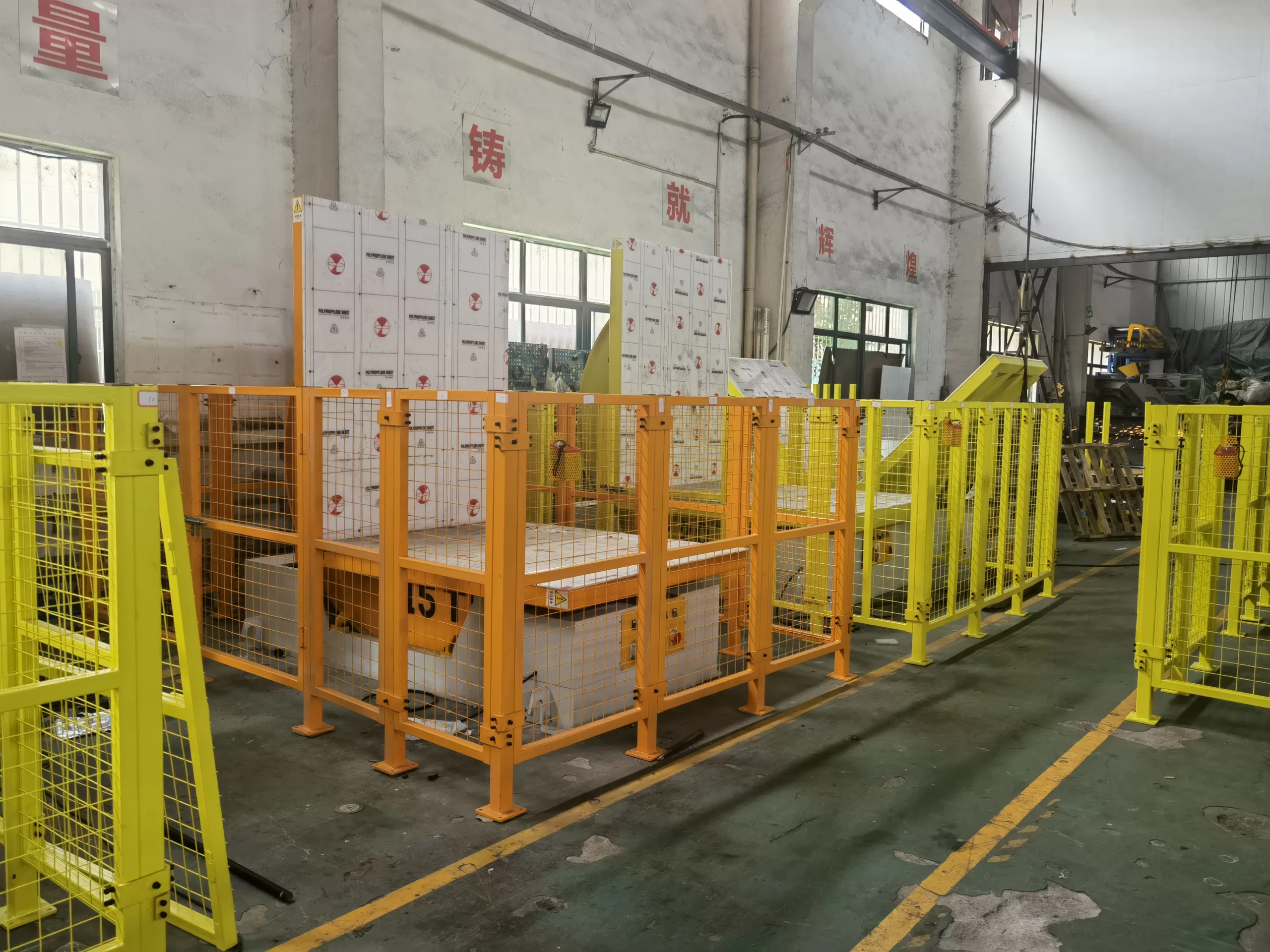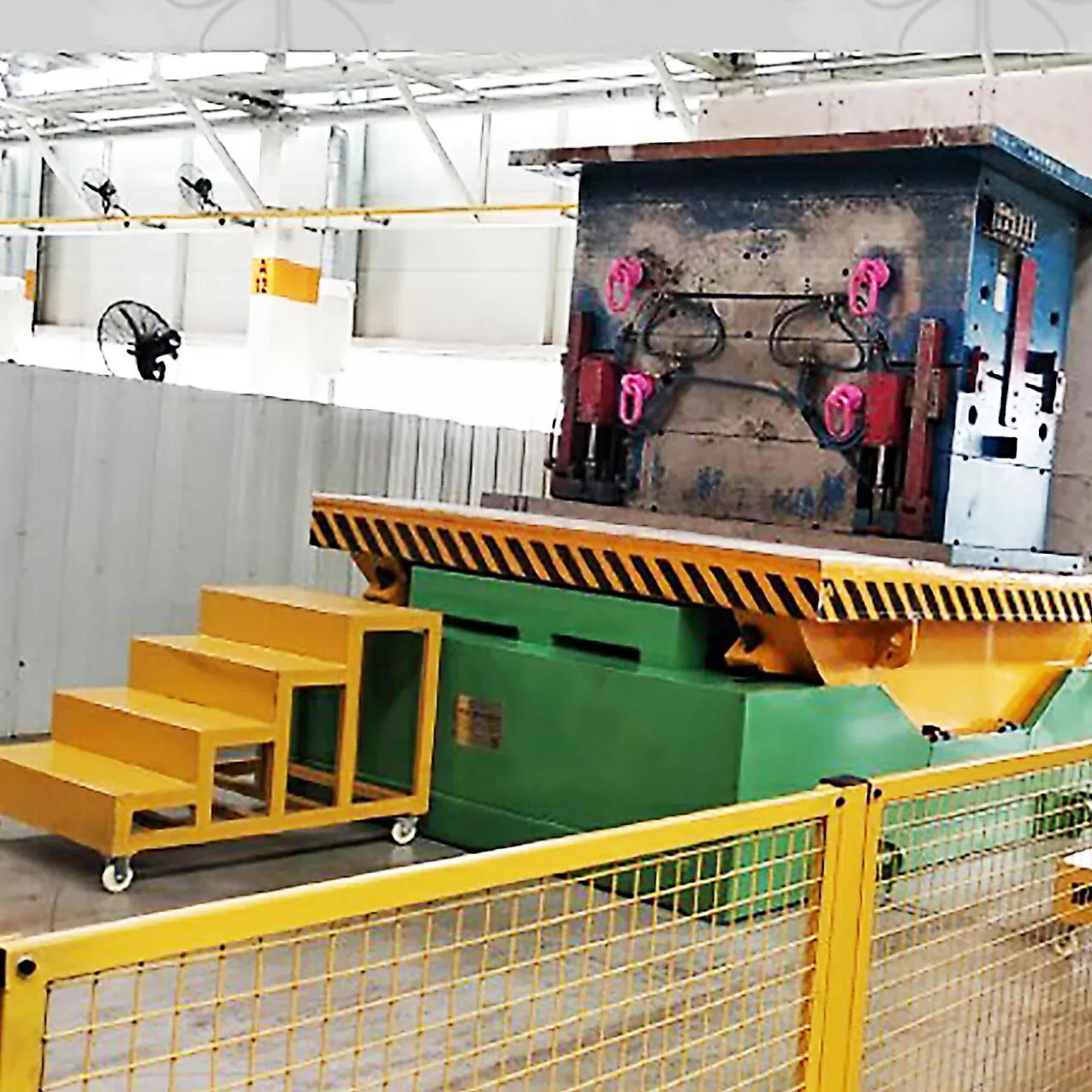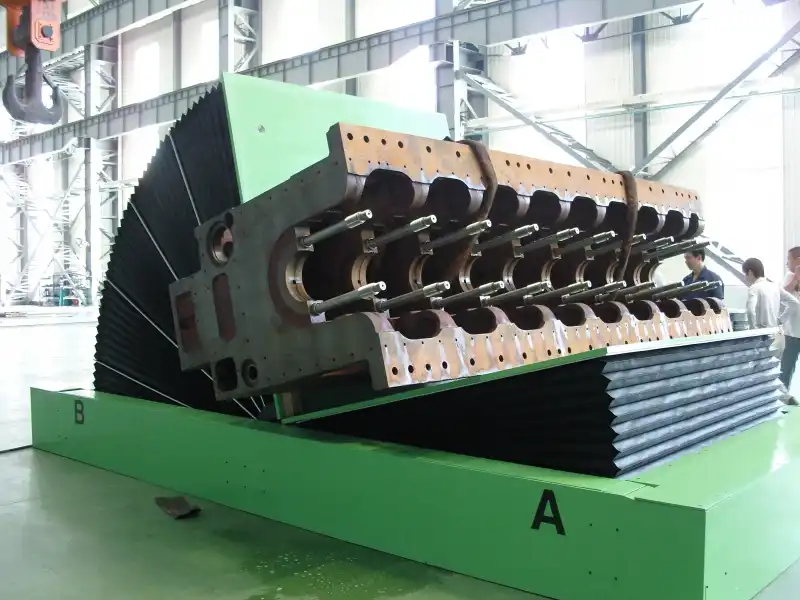How Can Mexican Steel Mills Overcome Rising Costs and Aging Equipment?
As a steel mill owner or CEO in Mexico, you are likely facing immense pressure. The price of electricity and fuel seems to change every day, making it impossible to predict your production costs. Many of your essential machines have been running for over 15 years, and you know a critical failure is not a matter of if, but when. On top of that, government environmental standards are getting tighter, demanding significant investment just to stay compliant. This constant battle against rising costs and aging infrastructure can feel overwhelming, impacting not just your bottom line but your ability to plan for the future.
The most effective way for Mexican steel mills to overcome these challenges is by making a strategic investment in modern, automated coil packaging and handling systems. These solutions directly attack the core problems of high operational costs and unreliable, aging equipment. By automating the end of your production line, you can significantly reduce energy consumption, slash labor costs, minimize material waste, and drastically improve equipment uptime. This is not just an equipment upgrade; it is a fundamental shift towards a more efficient, predictable, and profitable operation.

I have walked in your shoes. Before I founded SHJLPACK, I was an engineer on the factory floor, and later, I managed my own packing machine factory. I know the feeling of seeing a production line stop because of a single worn-out part. I understand the weight of making a large capital investment and needing to justify it with a clear return. The insights I am sharing come from decades of hands-on experience, both in solving these problems for myself and in helping clients across Mexico and Latin America build more resilient businesses. Let's look at the practical ways you can turn these challenges into opportunities for growth.
How Can Automated Coil Packing Lines Address Labor Costs and Safety Concerns?
You see the rising cost of skilled labor on your balance sheet every month. But the true cost is higher. You worry about the safety of your team working around heavy steel coils, where a moment of distraction can lead to a serious accident. This constant risk creates liability and stress. Finding and retaining good workers for demanding physical jobs is a challenge that only gets harder. You feel caught between needing more output and protecting your people.
Automated coil packing lines offer a direct and powerful solution. They fundamentally reduce the need for manual intervention in the most hazardous parts of your process. By automating tasks like coil strapping, wrapping, and transport, you can reassign your valuable team members to safer, more supervisory roles. This not only cuts direct labor costs but also dramatically lowers the risk of accidents, creating a safer and more stable work environment.

When I started as an engineer, safety protocols were not what they are today. I vividly remember a day when an operator was manually feeding steel straps into a tensioner. The strap slipped, recoiling with incredible force just inches from his face. No one was hurt that day, but the incident stayed with me. It was a clear sign that relying on manual skill in such a high-risk environment was unsustainable. This experience was a driving force behind my passion for automation. We are not just replacing a person with a machine; we are removing a person from a dangerous situation.
From High Risk to High Reliability
The difference between a manual or semi-automated process and a fully automated one is night and day. It's not just about speed; it's about control, consistency, and safety. A manual process is limited by the skill, strength, and attention of the operator. An automated system performs the perfect action every single time.
Comparing Manual vs. Automated Systems
Let's break down the tangible differences. This isn't just theory; these are the real-world changes you can expect.
| Feature | Manual / Semi-Automated Line | Fully Automated Line |
|---|---|---|
| Operator Requirement | 2-4 operators per shift in the packing area. | 1 supervisor overseeing the entire line. |
| Safety Risks | High. Constant exposure to heavy loads, sharp edges, and high-tension strapping. | Minimal. Operators work outside of safety fences and control panels. |
| Package Quality | Inconsistent. Depends on the operator's skill and level of fatigue. | Perfectly consistent. Every coil is strapped and wrapped to exact specifications. |
| Operational Speed | Bottlenecked by manual tasks. | Continuous, predictable flow matching your production speed. |
| Data & Tracking | None or manual. Difficult to track performance. | Full data logging for every coil, enabling quality control and tracking. |
An automated system moves the coil, weighs it, applies straps, wraps it in protective film, and sends it to storage without a single person needing to touch it. This eliminates the root causes of the most common accidents in a steel mill: crushing injuries, cuts from sharp steel edges, and strains from repetitive heavy lifting. For a CEO like you, Javier, this means lower insurance premiums, fewer lost-time incidents, and a workforce that feels valued and protected. It transforms a major operational headache into a source of strength and efficiency.
What Role Does Predictive Maintenance Play in Maximizing Uptime for Steel Mills?
An unexpected breakdown on a critical production line is one of the biggest threats to your profitability. One moment, your mill is running smoothly, and the next, everything grinds to a halt. The costs add up quickly: idle workers, emergency repair crews, delayed shipments, and unhappy customers. Your current maintenance might be based on a fixed schedule, but this often means you either replace parts that are still good or you fail to catch a part that's about to break. You are stuck in a reactive cycle, always fighting fires instead of preventing them.
Predictive maintenance, integrated into modern equipment, changes the entire game. By using a network of IoT sensors to monitor the real-time health of your machinery—tracking vibration, temperature, and energy use—the system can predict a potential failure long before it happens. This allows you to schedule maintenance during planned downtime, turning an expensive, production-stopping emergency into a routine, low-cost fix. It's the key to moving from reactive problem-solving to proactive control and achieving your goal of 95% equipment uptime.

I've seen this transformation firsthand with my clients. A steel processor in Querétaro was struggling with their old packing line. It seemed like every month, a different motor or gearbox would fail without warning, shutting them down for a day or two. They were living in constant fear of the next breakdown. When we installed a new, smart packaging line, the predictive maintenance system was the feature that truly gave them peace of mind.
The Shift from Reactive to Proactive
Let's be clear about the evolution of maintenance strategy. Many factories still operate in the first two stages, which are costly and inefficient.
- Stage 1: Reactive Maintenance ("Fix it when it breaks"). This is the most expensive and disruptive approach. It maximizes downtime and leads to collateral damage when one part's failure causes others to break.
- Stage 2: Preventive Maintenance ("Fix it on a schedule"). This is better, but still inefficient. You might replace a perfectly good bearing every 2,000 hours of operation, wasting money on parts and labor. Or, a bearing designed to last 2,000 hours might fail at 1,500 hours because of unique operational stress, leading to an unexpected breakdown anyway.
- Stage 3: Predictive Maintenance ("Fix it when it's about to break"). This is the goal. Sensors provide the data, and analysis provides the insight.
How it Works in Practice
Imagine a large bearing on the main wrapping ring of your coil packer. In a predictive system, a tiny sensor constantly measures its vibration and temperature. The data is fed to a central controller. For weeks, the readings are stable. Then, the system detects a tiny, almost unnoticeable increase in the vibration frequency. It's not dangerous yet, but it's a deviation from the baseline. The system automatically flags this component and sends an alert to your maintenance team's dashboard: "Bearing B-102 shows early signs of wear. Recommend inspection during next planned shutdown." Your team now has the power. They can order the part, schedule the labor, and replace it during a weekend stop, ensuring zero interruption to production. This is how you achieve 95% uptime. It's not about hoping your machines don't break; it's about knowing they won't.
How Can Integrated Packaging Solutions Help Meet Environmental Regulations?
The pressure from governmental bodies like SEMARNAT to reduce your environmental impact is not going away. It's a serious challenge that can feel like a direct conflict with your production goals. Investing in large-scale environmental projects like scrubbers or water treatment plants is necessary but expensive. It often feels like a pure cost center, a tax on doing business. You worry that meeting these standards will continue to eat into your already thin margins.
What many leaders don't realize is that a strategic upgrade in your production machinery, like an integrated coil packaging line, can be a powerful tool for environmental compliance. Modern systems are designed from the ground up for efficiency. They use advanced, energy-efficient motors, drastically reduce the consumption of packaging materials like plastic film and steel straps, and have a smaller physical footprint. This isn't about adding a separate "green" feature; it's about adopting technology that is inherently less wasteful, helping you meet regulations while also lowering your operational costs.

When I started my own factory, I faced this same challenge. My electricity bill was one of my biggest expenses. I looked at my old machines, especially those with large, inefficient hydraulic power units that ran constantly, and I saw pure waste. My first major project was to replace them with equipment that used modern servo motors. These motors only draw significant power when they are performing an action. The change was incredible. My energy consumption dropped by over 30% on that line. I met my cost-cutting goals and reduced my factory's carbon footprint at the same time. This taught me a valuable lesson: profitability and sustainability are not enemies; they are partners.
A Multi-Pronged Approach to a Smaller Footprint
An integrated packaging line tackles environmental impact from several angles simultaneously. It's a holistic approach to efficiency.
Key Areas of Environmental Improvement
| Environmental Factor | Old Machinery | Modern Integrated System |
|---|---|---|
| Energy Consumption | Large, inefficient motors and hydraulic units run constantly, consuming massive amounts of power. | High-efficiency servo motors and smart controls use up to 70% less energy by only drawing power when needed. |
| Material Waste | Imprecise controls lead to overuse of stretch film and strapping. Film is often applied with little to no pre-stretch. | Precision controls and power pre-stretch heads can stretch film by 300% or more, using less material for a more secure wrap. |
| Consumable Waste | Hydraulic systems require large amounts of oil, which can leak and requires special disposal. | All-electric designs eliminate hydraulic systems, getting rid of oil consumption and leak risks. |
| Physical Footprint | Bulky, sprawling designs require more factory space, lighting, and HVAC resources. | Compact, integrated designs reduce the required floor space and associated energy costs. |
By upgrading, you are not just buying a new machine. You are investing in a system that directly helps you achieve your goal of reducing unit energy consumption by 10% or more. The money you save on electricity and wrapping materials goes directly to your bottom line. And when government inspectors visit, you can proudly show them the modern, efficient technology you've implemented as proof of your commitment to sustainable manufacturing in Mexico. It turns a regulatory burden into a competitive advantage.
What's the Real ROI of Upgrading to a Smart Coil Packaging System?
As a pragmatic business owner, the most important question is always about the return on investment. A new packaging line is a significant capital expense, and you need to be certain that it will pay for itself and contribute to your goal of reducing overall operating costs. The fear is that you'll be sold on promises of savings that never fully materialize, leaving you with an expensive piece of equipment that doesn't solve your core business problems. You need to see a clear, logical path from investment to profit.
The real ROI of a smart coil packaging system goes far beyond simple math. It is a combination of direct, easy-to-calculate savings and powerful, indirect gains that multiply your profitability. While the direct savings in labor, materials, and energy can often lead to a payback period of 18-36 months, the indirect benefits—like increased throughput, zero quality claims from damaged coils, and a safer workplace—are what truly transform your business. A proper ROI analysis looks at the total impact on your operation.

I always work through this analysis with my clients. I remember a meeting with a steel service center owner in Monterrey. He was skeptical. He saw the price tag and said, "Vincent, I can hire a lot of people for that amount of money." I sat down with him and his finance team. We didn't just talk about the machine; we built a business case. We mapped out his current costs—not just salaries, but the cost of shipping damage, of production bottlenecks, of that one time a safety incident stopped his line for three days.
Calculating the Complete Return
To understand the full value, you must look at both the obvious savings and the strategic advantages.
Tangible Savings: The Hard Numbers
This is the straightforward part of the calculation.
- Labor Reduction: Take the number of operators you can reassign from the packing line (let's say 3 operators over two shifts). Multiply their fully-loaded annual cost (salary, benefits, insurance). This is your first big saving.
- Material Savings: A modern wrapper with 300% pre-stretch uses one meter of film to create four meters of wrap. Calculate your annual film cost and reduce it by 50-70%. Do the same for strap waste.
- Energy Savings: Compare the kWh consumption of your old hydraulic line to a new all-electric one. The difference, multiplied by your electricity rate and operating hours, is a direct saving.
- Maintenance Savings: Calculate what you spent last year on emergency repairs and unplanned downtime. A predictive maintenance system reduces this to the much lower cost of planned parts and labor.
Intangible Gains: The Value Multipliers
This is where the investment becomes truly strategic.
- Increased Throughput: If your old packing line was a bottleneck, a new line can increase the number of coils you ship per day. What is the profit on five extra coils per day, every day?
- Improved Quality & Reputation: What is the total cost of one coil damaged in transit? It includes the freight to send it back, the labor to handle it, the cost of the scrap material, and most importantly, the damage to your reputation with a key customer. A perfectly packed coil eliminates this cost.
- Enhanced Safety: You can't put a price on preventing a serious injury, but it has real financial value in terms of insurance, potential legal fees, and employee morale.
- Data for Decision Making: A smart line provides real-time data. You can see exactly how long it takes to pack each type of coil, allowing you to schedule production more accurately and provide better delivery estimates to your customers.
When the owner in Monterrey saw the full picture, the decision became simple. The tangible savings alone gave him a payback period of 28 months. But the intangible gains, especially the elimination of shipping damage, were what convinced him. He later told me his only regret was not doing it three years earlier.
Conclusion
Upgrading your coil packaging line is not just an equipment purchase. It is a strategic investment in building a more resilient, profitable, and future-proof steel operation in Mexico.





